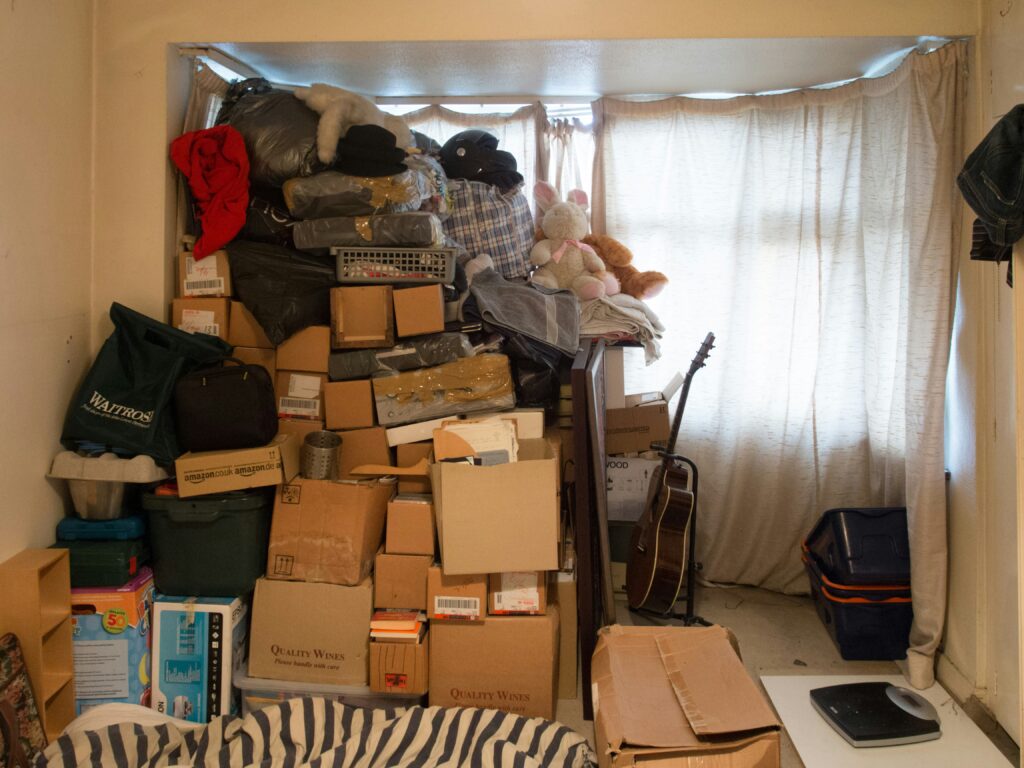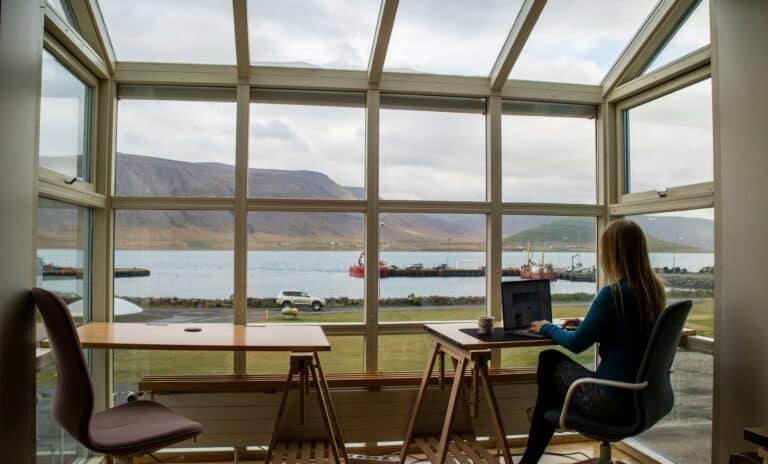With the rise of remote working, more and more creatives are trying to make the most out of their home offices. Yet, as we dive into the realm of minimalism, we may encounter challenges regarding space management and storage solutions. For that reason, today’s article aims to guide you through the journey of maximizing your minimalist workspace. 🗂💻

The focus will be on creative storage hacks, specifically designed to maintain a tidy, inspiring, and functional environment. As your virtual guide, we’ll step into the intricate, yet fascinating world of optimization, decluttering, and organization. With a comprehensive checklist at hand, you’ll be able to create a minimalist workspace that supports your workflow, boosts your creativity, and helps you achieve your work objectives. 🔧🖥
Why Embrace a Minimalist Workspace?
First and foremost, it’s important to understand the reason behind the increasing popularity of minimalist workspaces. Minimalism isn’t just a design trend, it’s a lifestyle choice. It’s about decluttering your physical and mental space, and focusing on what truly matters. For remote creatives, this translates to a workspace that encourages focus, creativity, and productivity, without the distraction of unnecessary items. 🎨💡
The Challenges of Maximizing a Minimalist Workspace
However, a minimalist workspace doesn’t mean you have to compromise on functionality. This is where many remote creatives struggle. How do you maintain a minimalist design while ensuring that you have everything you need within arm’s reach? It’s a complex balancing act that requires clever storage solutions and efficient use of space. And that’s exactly what we’ll be tackling in today’s article. 🤔📏
What to Expect from Today’s Article
Throughout this comprehensive guide, we’ll be sharing various creative storage hacks, each designed to help you make the most of your minimalist workspace. From clever uses of vertical space, hidden storage options, to digital solutions, we’ll cover a range of strategies tailored to different needs and workspace configurations. Each suggestion will be backed by practical tips and step-by-step instructions to ensure you can easily implement them in your own workspace. 📝🛠
Moreover, we’ll provide a handy checklist, which you can use to keep track of your progress. This list will guide you through the process of optimizing your workspace, ensuring you don’t miss any important steps. Whether you’re a designer, writer, coder, or any other type of creative, this guide is designed to help you thrive in your remote work environment. 💼🏡
By the end of this article, you’ll have a clear understanding of how to maximize your minimalist workspace. You’ll be equipped with practical knowledge, tools, and strategies to create an organized, functional, and inspiring environment that enhances your productivity and supports your creative journey. So, let’s dive in and start the transformation of your workspace into a minimalist masterpiece! 🚀🎯
The Fundamentals of a Minimalist Workspace
Embracing minimalism in your workspace doesn’t mean living with less but living with what’s essential. It’s about creating a space free from unnecessary clutter, distractions, and chaos, thereby paving the way for better productivity, creativity, and focus. Let’s explore the core principles of setting up a minimalist workspace.
The first principle of a minimalist workspace is to declutter ruthlessly. This process involves eliminating non-essential items from your workspace. It’s essential to be critical and purposeful during this process. While it may be challenging to part with items you’re emotionally attached to, remember that the goal is to create a workspace that enhances your productivity, not hinder it.
Secondly, ensure every item in your workspace serves a purpose. This principle encourages function over form. While aesthetic appeal is important, it should not overshadow the need for functionality. Essentially, a minimalist workspace should be practical and easy to navigate.
🎥 Video: ‘Minimalist Desk Setup – How to Create a Productive Workspace’ (Channel: Matt D’Avella)
Choosing the Right Storage Solutions
One of the key aspects of maintaining a minimalist workspace is choosing the right storage solutions. This doesn’t mean buying more storage containers or cabinets. Instead, it involves being smart about how you store and organize your items. Let’s delve into some useful storage solutions for your minimalist workspace.
Firstly, consider investing in furniture that doubles as storage. For example, desks with built-in storage compartments or shelves can help keep your workspace organized while minimizing the amount of furniture in your workspace. Additionally, using wall-mounted storage solutions can help free up desk space and create a more open, airy workspace.
Another essential storage solution is digital storage. By digitizing documents and using online tools for tasks such as note-taking and project management, you can significantly reduce the amount of physical clutter in your workspace.
Table 1: Comparing Physical and Digital Storage Solutions
| Storage Solution | Pros | Cons |
| Physical Storage | Easy to access, Can be aesthetically pleasing | Takes up space, Can contribute to clutter |
| Digital Storage | Space-efficient, Easy to organize | Requires tech knowledge, Potential for data loss |
Creative Hacks to Maximize Your Minimalist Workspace
Now that we’ve covered the basics of setting up a minimalist workspace and choosing the right storage solutions, let’s explore some creative hacks to maximize your workspace further. These hacks will not only keep your workspace organized but also enhance your productivity and creativity.
Firstly, consider using a pegboard to organize your tools and supplies. Pegboards are versatile, customizable, and perfect for keeping items within reach. You can use them to store everything from pens and notebooks to headphones and chargers. Plus, they add a touch of personal style to your workspace.
Secondly, make use of vertical space. Most people only utilize the horizontal surfaces in their workspace, but the walls can be a valuable asset for storage and organization. Install shelves or hanging baskets to keep your workspace clean and organized. Plus, hanging artwork or motivational quotes can add a personal touch and inspire creativity.
🎥 Video: ‘DIY Small Space Desk Organization Ideas’ (Channel: Nifty)
Maintaining Your Minimalist Workspace
Once you’ve set up your minimalist workspace, it’s crucial to maintain it. This involves regularly decluttering and organizing your workspace, as well as implementing habits that promote a minimalist lifestyle.
Firstly, make it a habit to clean your workspace at the end of each day. This simple routine can have a significant impact on your productivity and focus. By starting each day with a clean, organized workspace, you’re setting yourself up for success.
Secondly, practice the ‘one in, one out’ rule. This rule states that for every new item you bring into your workspace, you must remove an old one. This helps to prevent clutter from accumulating and ensures your workspace remains minimalistic.
🎥 Video: ‘How to Keep Your Desk Clean & Organized: My 5 Essential Tips’ (Channel: Thomas Frank)
Embracing the Minimalist Lifestyle
Finally, it’s important to remember that minimalism isn’t just about having a clean, organized workspace. It’s a lifestyle that promotes living with less and valuing what’s essential. By embracing the minimalist lifestyle, you can reduce stress, increase productivity, and create a workspace that’s conducive to creativity and innovation.
Embracing the minimalist lifestyle involves being mindful of your consumption habits, letting go of items that no longer serve you, and prioritizing experiences over possessions. It’s about finding happiness in simplicity and making room for what truly matters.
So, are you ready to transform your workspace and embrace the minimalist lifestyle? Start with the basics, choose the right storage solutions, implement creative hacks, maintain your workspace, and embrace the minimalist lifestyle. Remember, your workspace is a reflection of your mind. A clean, organized workspace leads to a clear, focused mind. Happy decluttering! 🚀
Conclusion
In conclusion, this detailed exploration into the realm of Software Engineering and IT certainly sheds some light on the often complex and intricate facets of the field. From the initial stages of software development, to the utilization of advanced algorithms, the importance of efficient project management, to the critical role of security measures in IT, we have covered substantial ground.
The importance of these elements cannot be overstated, as they form the very backbone of the IT industry. The proliferation of software in our daily lives, whether it’s through apps on our smartphones, or complex systems running entire organizations, is a testament to the significance of Software Engineering.
Moreover, this journey through the aspects of software development also illustrates how each element, from the coding phase to testing and maintenance, works in harmony to deliver the end product. 🧩 It is the orchestrated effort of these interlinked processes that brings an idea to life in the form of functional, efficient and secure software.
At the heart of this intricate process lies the algorithms, the set of rules that guide the software and dictate its function. These algorithms are not merely lines of codes, but a manifestation of the programmer’s problem-solving ability, creativity and technical prowess. 🔬
In addition, we’ve delved into the pivotal role of effective project management in delivering successful software projects. The project manager acts as the linchpin, coordinating the efforts of the team and ensuring the project is on track to meet its objectives. The value of good project management can never be underestimated as it directly impacts the quality of the end product.
And let’s not forget the discussion on security in IT, a topic of immense relevance in our current digital age. As technology evolves, so do the threats it faces. Hence, it’s crucial to continually update and fortify security measures to protect the integrity of systems and data. 🛡️
We hope this comprehensive guide has provided you with valuable insights into the world of software engineering and IT. We encourage you to apply the knowledge gained, share this information with your peers and contribute to the broader understanding of these critical topics. 🚀
For further reading, you can explore the following resources:
– [The Art of Computer Programming](https://www-cs-faculty.stanford.edu/~knuth/taocp.html)
– [Project Management for Modern Information Systems](https://www.amazon.com/Project-Management-Modern-Information-Systems/dp/1591406935)
– [The CERT Guide to System and Network Security Practices](https://www.sei.cmu.edu/publications/books/cert-guide-to-system-and-network-security-practices/)
Let’s continue this conversation in the comments section below. We’d love to hear your thoughts and experiences on these topics.
Remember, every piece of software started as an idea, and with the right understanding and tools, there’s no limit to what we can create. 💡
Sources:
– [Stanford University: The Art of Computer Programming](https://www-cs-faculty.stanford.edu/~knuth/taocp.html)
– [Amazon: Project Management for Modern Information Systems](https://www.amazon.com/Project-Management-Modern-Information-Systems/dp/1591406935)
– [Carnegie Mellon University: The CERT Guide to System and Network Security Practices](https://www.sei.cmu.edu/publications/books/cert-guide-to-system-and-network-security-practices/)
Always remember: knowledge shared is knowledge doubled. 📘
Let’s keep pushing the boundaries of what is possible in software engineering and IT!



